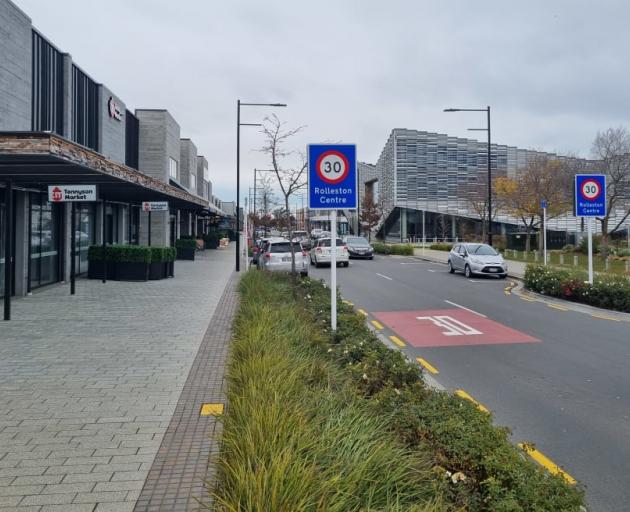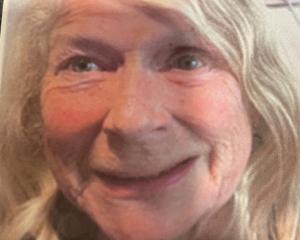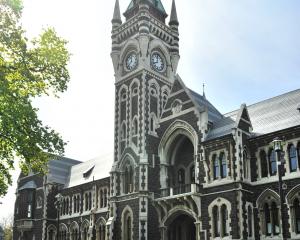
Census data published last week revealed its population had swelled by a whopping 17,583 people over the last five years.
But are the new arrivals seamlessly slotting in or creating growing pains?
One couple had recently moved from Christchurch to Selwyn's biggest town, Rolleston.
"We feel a lot more secure having bought property here, than near a river or on a fault line ... We've been through enough natural disasters in our lifetime, thank you!" one partner said.
"Our understanding is that there'd be less liquefaction in the event of a major earthquake here than obviously in Christchurch, where it's basically built on a swamp," the other said.
The couple said they loved their new community, but had found the rapid influx of people was causing some friction locally.
"Just noticing that in the discourse - letters to the editor in the local papers and stuff - people's reactions to a bicultural country or people's reactions to wanting things to be done differently or more inclusively ... there are some people who have less exposure to that kind of thinking and they're finding it hard," they said.
It could be difficult to keep your bearings in the ever-expanding town, another resident said.
"It's definitely grown since I moved out here, there was only a couple of takeaways and now there's actually a good selection, there's lots of shops.
"We don't recognise the streets any more [on the outskirts of town] and where you think the edge of town was it's [moved] another couple of blocks every few weeks.
"It's pretty crazy."
Andrew Taylor has been a Selwyn real estate agent for 25 years and noticed his commute to work in Rolleston had changed in the past few years.
"We've now got a rush hour in Rolleston currently in the mornings with people leaving, going into Christchurch and also coming back in," he said.
"In the afternoons, the roads can actually get quite congested, which is a new thing out here. I guess that's the cost of growth."
Sections had become harder to sell, due to high construction costs, but there was steady demand for developments and other urban and rural properties.
Selwyn Mayor Sam Broughton said changes to central government policy meant about 10,000 homes had popped up over the last five years in places the council had not planned for.
New building density rules - which allowed three properties, three storeys high on a single section without extensive consents - had been applied to Rolleston, Lincoln and Prebbleton.
"That doesn't mean we're going to see that sort of living straight away, but it does enable future development to be on the footprint that we already have for our towns, because protecting our rural productive land is hugely important to our region."
No new land had been zoned for urban residential properties in the 2024 Selwyn Long Term Plan, he said.
In terms of property values, a new factor was beginning to dictate the district's housing market, Taylor said.
"Out this way, we never had school zones or anything really, many years ago when I started. But, yes, it's quite an influence now on where people are buying.
"People want to know the school zone, because a lot of schools are at capacity and then there's new schools popping up all over the show as well, and they're helping drive different areas."
Rolleston College principal Rachel Skelton was not surprised.
"We have felt this for years, the continuous, exponential growth. It'll be interesting - and I haven't dug down yet into the demographic or the age breakdown of that census data - but my spidey senses tell me a lot of that is young people and young families," she said.
Her college - Rolleston's sole high school - had only been open for eight years, but was already at its capacity roll of 1800 students.
Work to build a second campus was underway, but the design was under review, with certain facilities slashed from the plans by the Education Ministry.
There had been a little movement in the design, with more playing fields added and a science and technology block now largely untouched, but pastoral care and office space in the gymnasium remained on the chopping block, Skelton said.
No dates had been given yet for the second or third stages of construction either, she said.
Skelton had also heard anecdotally that getting a GP appointment or enrolling in a school was increasingly difficult.
"It is a wonderful place to live and there are a lot of really good facilities, but we need to make sure that infrastructure for schools and healthcare keeps up with the growth."
Selwyn was missing out on some of the economic benefits of its growth, Broughton said.
"There are some new shops and great schools and facilities, but all the income, the GST spend and the income tax, that all goes back to central government," he said.
"We need to think about reshaping the way that New Zealand's taxes are divided up among local and central government, because at the moment all those costs are local costs and the benefit needs to be shared back locally, too."
A fairer income distribution would help cover new infrastructure costs, which were currently shouldered by ratepayers and developers, Broughton said.
But on the whole, everyone RNZ spoke to raved about living in Selwyn - with one small caveat.
"Really up and coming, lots of great places to eat, more and more recreation - we're just holding out for a cinema, please," a resident summed up with a smile.
Key statistics:
- In the five years since the last Census in 2018, the Selwyn district’s population has grown 29 per cent to 78,144 on Census night in March last year. The growth for New Zealand during the same period was 6.3 per cent.
- The number of people who identify as Asian and Indian has risen 130 per cent to 8877. This is now the second biggest ethnic group in the district (11.4 per cent), jumping ahead of Māori who make up 9 per cent of the population (7050). European remains the largest ethnic group (65,862), but that is a 5.2 per cent drop since the previous Census. The proportion of Pacific people rose from 1.7 per cent to 2.4 per cent (1869), and the proportion of Middle Eastern, Latin American, or African has risen from 0.9 per cent to 1.5 per cent (1167).
- There are now more than 30,000 homes in the Selwyn district, with 6876 built since 2018.
- Since 2018, Christchurch’s population has risen 6.1 per cent to 391,383 while Waimakiriri grew by 11.3 per cent to 66,246. In 2023, the median age of New Zealand’s population increased to 38.1 years, compared with 37.4 years in the 2018 Census. Selwyn bucks that trend with the median age staying at 37.6 years since 2018.
- People aged 35-39 make up the highest proportion of the Selwyn district’s population at 8 per cent, followed by people aged 30-34 and 10-14 at 7.5 per cent.
By Daniel Alvey and Niva Chittock of RNZ














